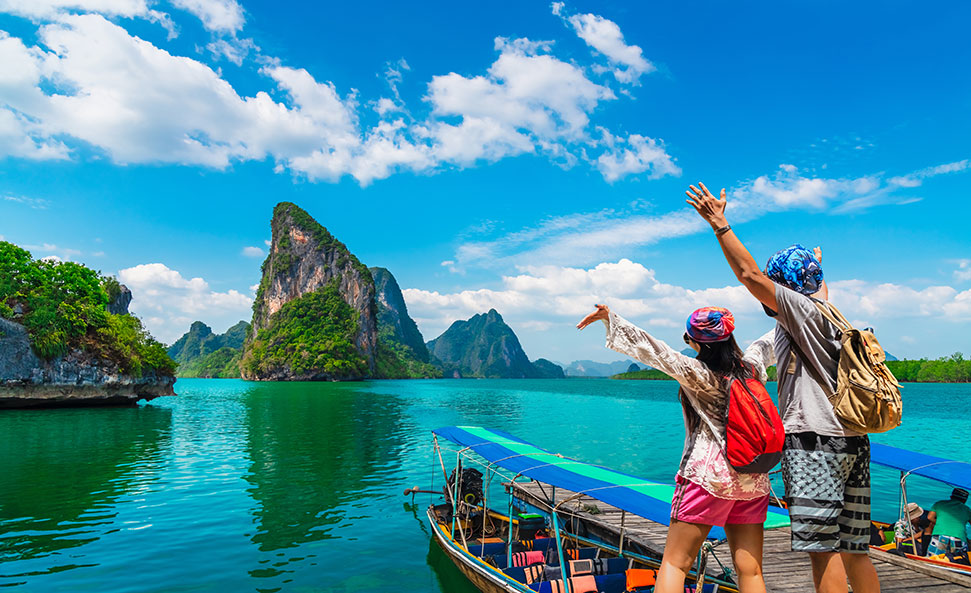The north provides a beautiful blue sky at this time of year. December and January are much better, with fog possibility, while the upper Himalaya may be chilly but offers spectacular mountain views. Increased temperatures in April and May may result in less expensive vacations but heavy humidity and thunderstorms. When the rest of the nation is experiencing the rainy season, June and September are the best months to visit Ladakh, situated in the country’s extreme north.
India is a big nation with a wide range of cultures. When arranging a trip to India, many travelers get perplexed. There is so much to see that deciding which sites to visit and which to forgo might be difficult. International Flights to India from DC are costly, and every visitor wants to maximize their stay in India. So, here are some pointers to help your planning easier.
The enchantment starts when you plan a trip to India, which is fortunate. In their experience of living in India and travelling across India, at least some Indian trip preparation is more than other Asian nations.
Contrary to common belief, India is not a year-round destination. You must realize that choosing the correct place depending on visiting India is critical, from the majestic Himalayas to the warm beaches. We go through everything in great detail. We’ll provide you with a comprehensive overview of when is the best time to visit India and which locations are the best to stay during the off-season, the finest festivals in India, and when is the best weather in India, among other things.
- Travelling time:
It would help if you chose when you are willing to fly to India. Given the climate, the best time to visit India in October to March.
- Time Required for Travel:
The next stage is to choose the trip length or how many days you can spend in India on your journey. A Golden Triangle trip for six nights and seven days is the ideal alternative if you have a few days, and you may stay in Delhi, Agra, and Jaipur for two nights each. The Golden Triangle comprises Delhi, India’s capital, Agra, which is home to the world-famous Taj Mahal, and Jaipur, the state capital of Rajasthan.
- Choosing a destination:
It is very dependent on your preferences. For a 10- to 12-day trip, you may combine the Golden Triangle with other Rajasthani royal cities, such as Jodhpur and Udaipur, for a regal experience. Bikaner and Jaisalmer, two desert villages rich in history and culture, are not missed by anybody with a penchant for dunes. Varanasi and Haridwar are excellent destinations if you’re interested in spirituality.
May combine the famed Ranthambhore National Park and the Golden Triangle for animal enthusiasts. There are numerous additional well-known national parks, including Bandhavgarh and Kanha. If you want to go on a beach holiday, Goa is the place to go! A visitor to India interested in culture, architecture, and nature may combine the Golden Triangle in the north with well-known Kerala in the south. Kerala is a nature lover’s dream come true, with the perfect mix of beaches, backwaters, hill regions, and wildlife.
- Choosing the right hotel category:
It would help if you chose the hotel category that best fits your budget. Stay at the Oberois and Taj hotels for the most lavish holiday. For a nice hotel without breaking the bank, 5-star hotels are the way to go. If you’re shopping for historic homes, check online reviews for upkeep. The standards of 3 and 4-star hotels in India are not comparable to those in the United States, the United Kingdom, or Canada. As a result, three and 4-star hotels should be on a luxury trip.
- Choosing a tour company:
You may contact reputable inbound (not domestic) tour operator online after you’ve decided on your vacation dates/month, the tour length, and a few places. They’d design a proper itinerary and route for you. Choose a firm that can tailor your trip to your needs. Look up their evaluations online and speak with them to learn more about their skills and service quality. Speaking with a few references might also be beneficial.
To get a sense of the actual cost, consider an all-inclusive package that includes lodging, breakfast, airport transfers, guide, sightseeing, entry, and additional events (excluding meals). Contact a few tour operators and choose the one that seems to be the most dependable and competent. Traveling with the appropriate operator can undoubtedly turn your vacation into an adventure.
India’s climate
The monsoon, or rainy season, is the essential feature of the Subcontinent’s climate.
In late May, a storm forms off the coast of Kerala and moves northeast for months. Heavy rains, hot sun, and high humidity throughout the monsoon.
Flooding may interrupt communications during the monsoon season and cause extensive devastation, particularly in the northwest forest areas and Bengal’s low-lying river plains.
Landslides are also common in the Himalayan foothills, and they may shut off whole valley systems for weeks.
When is the best time to visit India?
It’s the best time to visit since it’s between the busy tourist months of December and January and the rainy season. In winter, the climate contrasts between north and south India are most apparent. While Delhi was pummelling by Himalayan snowfields, the Tamil lowlands and Kerala’s coast continued to swelter in the post-monsoon heat. Coastal locations enjoy dry weather and mild temperatures, drawing local and international tourists between Christmas and New Year. Plan your transportation and lodging early if you want to travel in December or January. Delhi’s air pollution peaks in the winter, and the city’s most serious breakdown happens in the winter.
An Indian vacation in the summer
In most parts of the country, the monsoon season starts in the summer. Most governments will be saturated with rain during the summer months, making it uncomfortable and difficult to go about, particularly in rural areas. The hill stations of Leh and Ladakh in India’s countryside attract the bulk of local and international tourists. Bring waterproof clothing and sturdy footwear to visit India during the monsoon season.
You will be in India from June to August
Avoid the country’s coastal areas during the summer since the weather is terrible and most Goan beach resorts are closed. Instead, go north to the countrysides of Tamil Nadu and Goa to explore some of India’s hill stations.
July and August are great for visiting Ladakh’s hill stations in northern India. Rajasthan also avoids the humidity and rain of the monsoon season to a greater extent than other states. Please contact us if you need Direct flights from Delhi to USA from Washington, DC. Prices drop outside the peak tourist season, so now is an excellent opportunity to grab a good bargain.


